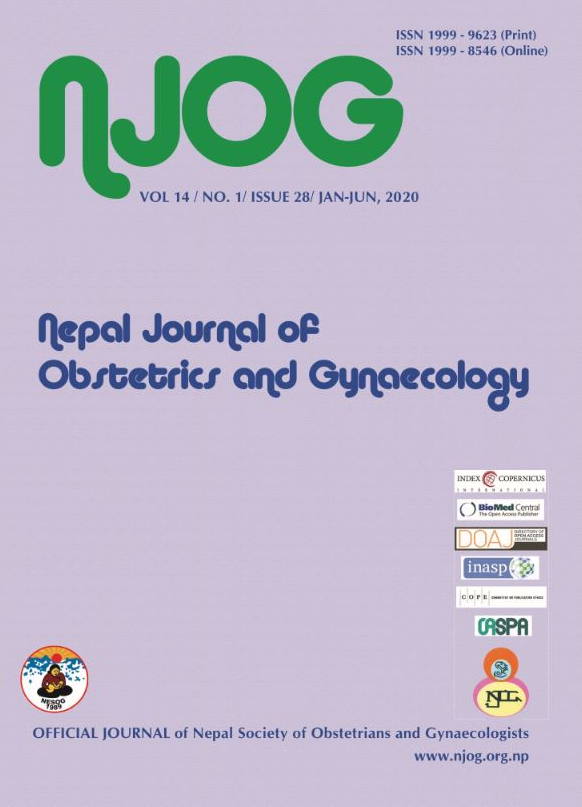Clinical profile of endometrial histopathological patterns in Abnormal Uterine Bleeding
Abstract
Aims: To study the association of clinical profile of patients with Abnormal Uterine Bleeding with the different endometrial histopathological patterns
Methods: A retrospective cross-sectional study was done in the department of Obstetrics and Gynaecology at a hospital in Karnataka, India from January 2017 to January 2019. Medical records were reviewed for all the cases of abnormal uterine bleeding who underwent endometrial biopsy.
Results: There were 148 records of endometrial biopsies; >55% were in 41-50 years age group; 28% had postmenopausal bleeding; and 28% presented with menorrhagia. Menorrhagia and menometrorrhagia were equally common under 50 years of age. The various physiological patterns of endometrium (proliferative, secretory & menstruating endometrium) were noted in more than half the cases (51%). Proliferative endometrium was in 37%, followed by hyperplasia without atypia in 22% and only 3% showed malignancy; all of whom were in the postmenopausal group. Even in women with post menopausal bleeding, proliferative pattern was the commonest (33%), followed by atrophic endometrium and malignancy. Atypical hyperplasia was found to be most commonly associated with post menopausal bleeding.
Conclusions: Both physiological and non physiological endometrial patterns were seen almost equally among the AUB cases. The knowledge of endometrial pattern in a case of AUB helps to decide a plan of management. Endometrial sampling plays a very important role in management of AUB, especially in the age group of more than 40 yrs; i.e, the peri and post-menopausal age groups, where incidence of malignant or pre malignant conditions was noted to be the highest.
Key words: abnormal uterine bleeding, endometrial cancer, endometrial sampling, hyperplasia
Downloads
Downloads
Published
How to Cite
Issue
Section
License
Copyright on any research article in the Nepal Journal of Obstetrics and Gynaecology is retained by the author(s).
The authors grant the Nepal Journal of Obstetrics and Gynaecology a license to publish the article and identify itself as the original publisher.
Articles in the Nepal Journal of Obstetrics and Gynaecology are Open Access articles published under the Creative Commons CC BY-NC License (https://creativecommons.org/licenses/by-nc/4.0/)
This license permits use, distribution and reproduction in any medium, provided the original work is properly cited, and it is not used for commercial purposes.



